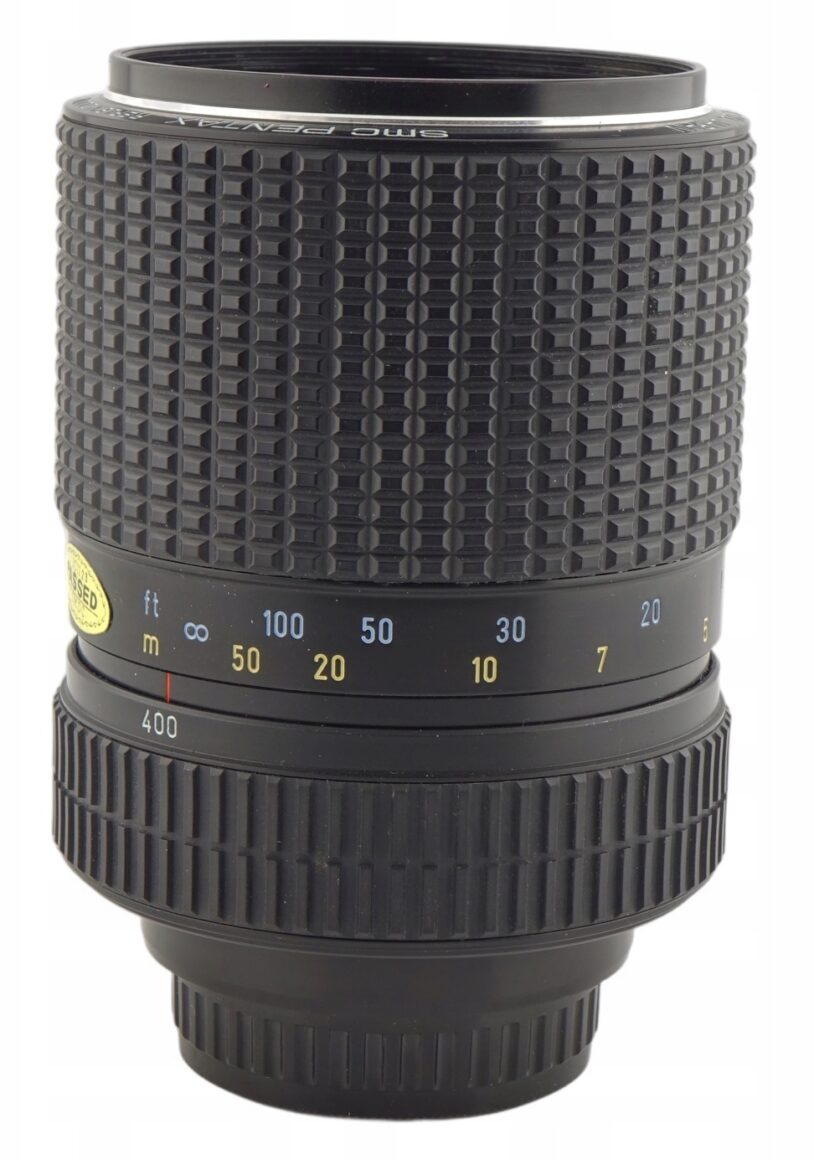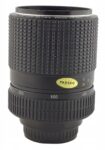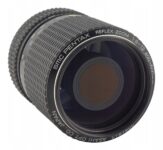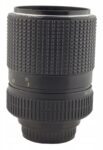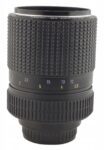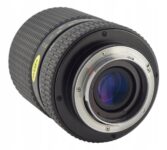smc Pentax 400-600mm F/8-12 Reflex
Super telephoto zoom lens • Film era • Discontinued
- Announced:
- · February 1982
- Production status:
- ● Discontinued
- Country of design:
- · Japan
- Original name:
- · ASAHI OPT. CO. SMC PENTAX REFLEX ZOOM 1:8~12 400~600mm
- Class:
- · Slow full-frame super telephoto zoom lens
- · Mirror/Reflex lens
- System:
- · Pentax K (1975)
Abbreviations
| SMC | Multi-layer anti-reflection coating is applied to the surfaces of lens elements. This anti-reflection coating increases light transmission, eliminates flare and ghosting, and maintains color consistence among all lens models. |
Specification
| Optical design: | |
| 35mm full frame | |
| 400mm - 600mm [1.5X zoom ratio] | |
| F/8 @ 400mm - F/12 @ 600mm | |
| 12 elements in 7 groups | |
| Pentax K [45.5mm] | |
| 6.2° @ 400mm - 4.1° @ 600mm (35mm full frame) | |
| On Pentax K APS-C [1.53x] cameras: | |
35mm equivalent focal length range: | 612mm - 918mm (in terms of field of view) |
35mm equivalent speed range: | F/12.2 @ 400mm - F/18.4 @ 600mm (in terms of depth of field) |
Diagonal angle of view: | 4° @ 400mm - 2.7° @ 600mm |
| Diaphragm mechanism: | |
Diaphragm type: | Fixed |
Aperture control: | None |
| Zooming: | |
Zoom mechanism: | Manual |
Zoom control: | Zoom ring |
Zoom type: | Rotary |
Zooming method: | Extends while zooming |
| Focusing: | |
| 3m | |
| 1:2.5 @ 600mm | |
Focusing modes: | Manual focus only |
Manual focus control: | Focusing ring |
| Physical characteristics: | |
| 730g | |
| ⌀82×108mm | |
| Accessories: | |
| Screw-type 67mm | |
| Rear screw-type 40.5mm | |
| H-R67 - Screw-type round | |
| Pentax Rear Converter-A 1.4X-L → 560-840mm F/11.2-16.8 | |
| Pentax Rear Converter-A 2X-S → 800-1200mm F/16-24 |
Sources of data
- Manufacturer's technical data.
- smc Pentax-A lenses operating manual.
- Pentax 35mm SLR lenses (September 1989).
- Pentax 35mm interchangeable lenses operating manual (August 2003).
- Pentax lenses & accessories booklet (December 1986).
- Pentax 35mm SLR lenses.
- Pentax MG booklet (PUB. 06221) (July 1983).
- Pentax cameras booklet (PUB. 06091, 40 pages) (March 1987).
- Pentax SLR cameras booklet (PUB. 050101) (September 1988).
- Pentax cameras booklet (PUB. 06091, 32 pages).
- Pentax ZX-M booklet.
- Pentax lenses and accessories booklet (PUB. 06771) (April 1983).
- Pentax lenses & accessories - A Comprehensive and Versatile Photographic System booklet.
Manufacturer description #1
The new Pentax 400mm - 600mm Super Telephoto Zoom, with virtually the same dimensions as a conventional 35mm - 70mm zoom, is so small and lightweight you can pan the horizon with amazing swiftness, as you cup the lens in your hand. It also focuses as close as three meters for exciting and dramatic close ups.
Manufacturer description #2
A compact and lightweight reflex design makes this an ideal lens for hand-held sports and landscape shots. The reflex design also ensures reduced chromatic aberrations and sharp images at all times.
Manufacturer description #3
Thanks to a reflex optical design, this extremely compact, lightweight super-telephoto zoom lens measures only 10cm in length. The reflex design also ensures reduced chromatic aberration and sharp images at all focal lengths plus a minimum focusing distance of 3m. Exposure is controlled by three screw-on ND (neutral density) filters and shutter speed variation. Screw-on skylight, Y2 and R2 filters are also provided. This is an excellent lens for hand-held shooting of moving subjects in sports and action photography.
Pentax series
The first generation of lenses designed for Asahi Pentax 35mm SLR cameras with bayonet mount. Introduced with Asahi Pentax K2, KX and KM in 1975.
- Robust, all-metal design with recessed focusing distance scale;
- Fully automatic diaphragm;
- Support for TTL open-aperture metering;
- Extremely accurate manual focusing with rubberized focusing ring;
- Multi-layer anti-reflection coating.
(except for 400mm+ super telephotos and bellows lenses).
Typical characteristics of mirror (reflex) lenses
- Catadioptric system consisting of curved mirrors and optical glass;
- Much shorter, lighter and less expensive designs than conventional super telephoto lenses;
- Outstanding correction of chromatic aberrations;
- Since the aperture is fixed, neutral density filters are used to obtain a smaller aperture;
- Doughnut-shaped out-of-focus highlights.
